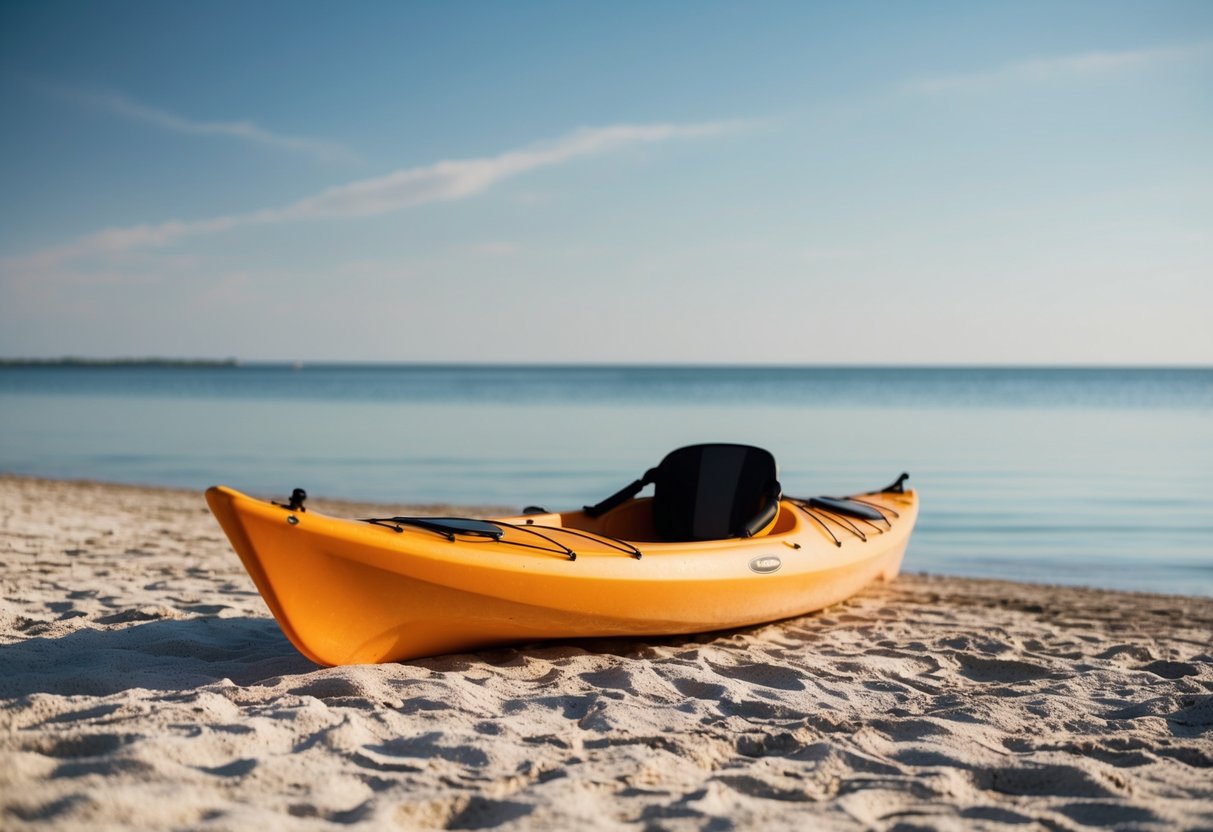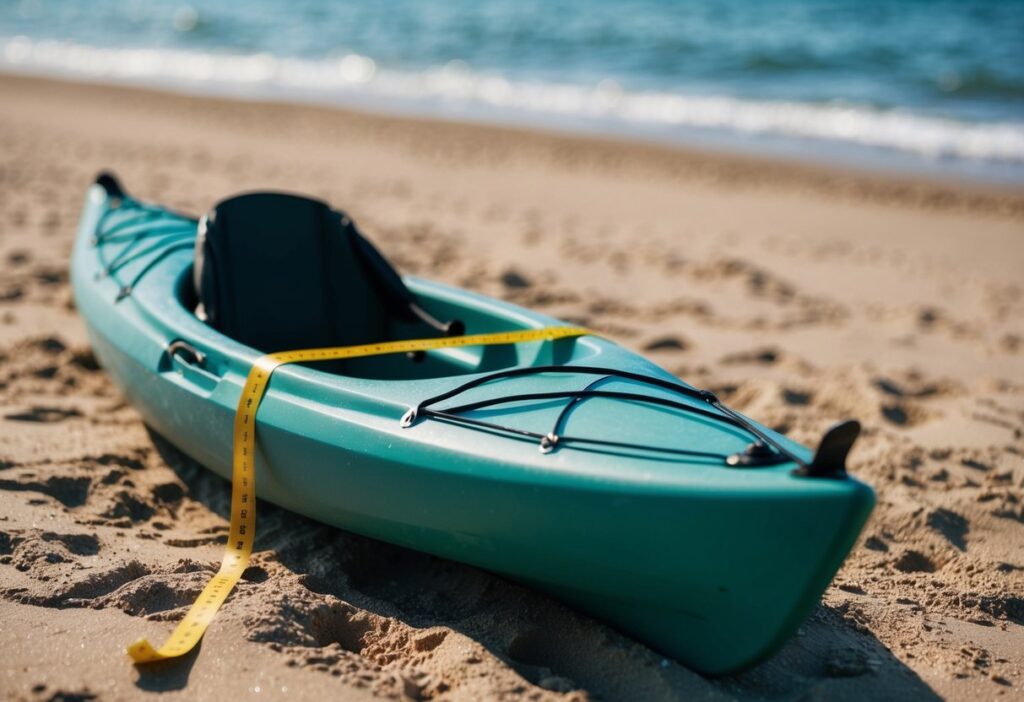Sea kayaking is a thrilling adventure, but choosing the right kayak can be tricky. We’ve paddled countless miles and tested various kayak sizes to help you find the perfect fit. The minimum length for a sea kayak is typically around 14 feet. This length provides the right balance of stability, speed, and maneuverability for most paddlers.

Why does length matter? A longer kayak generally moves faster and tracks better in open water. It also offers more storage space for gear on extended trips. But there’s no one-size-fits-all answer. Your height, weight, and paddling style all play a role in determining the ideal kayak size for you.
When shopping for a sea kayak, you’ll find options ranging from 14 to 18 feet long. Beginners often start with shorter kayaks, while experienced paddlers may prefer longer ones for improved performance. Remember, the best kayak is one that fits you comfortably and suits your paddling goals.
Key Takeaways
- Sea kayaks typically range from 14 to 18 feet in length
- Longer kayaks offer better speed and tracking in open water
- The ideal kayak size depends on your body type and paddling style
Determining Kayak Size
Choosing the right kayak size is crucial for comfort, performance, and safety on the water. Let’s look at the key factors that influence kayak sizing.
Role of Kayak Length
Kayak length plays a big role in how a boat handles. Longer kayaks, typically 14 to 17 feet, are faster and track better in a straight line. This makes them great for sea kayaking and touring. Shorter kayaks under 12 feet are more maneuverable, which is nice for rivers or tight spots.
We’ve found that most beginners do well with a kayak between 10 and 14 feet. It’s a good middle ground for stability and speed. Remember, longer doesn’t always mean better – it depends on how you plan to use your kayak.
Importance of Kayak Width
Width affects a kayak’s stability and speed. Wider kayaks, around 30 to 36 inches, feel more stable and are easier to get in and out of. They’re great for fishing or relaxed paddling. Narrow kayaks, about 22 to 25 inches wide, cut through the water more efficiently. This makes them faster but also tippy.
For beginners, we suggest starting with a wider kayak. As you gain skills, you might want to try a narrower one for better speed and tracking.
Other Dimensional Considerations
Kayak volume and deck height are also important. Volume relates to how much weight a kayak can carry. A higher volume kayak can hold more gear, which is great for longer trips. Deck height affects leg room and storage space.
The cockpit opening size matters too. A larger opening makes it easier to get in and out, while a smaller one gives more control in rough water.
We always recommend trying out different kayaks if possible. What looks good on paper might feel different on the water. Your comfort is key to enjoying your time kayaking.
Types of Sea Kayaks

Sea kayaks come in various shapes and sizes to suit different needs and preferences. We’ll explore solo and tandem options, as well as some specialized designs for specific activities.
Solo versus Tandem Kayaks
Solo sea kayaks are designed for one paddler and offer great maneuverability. They’re typically 14 to 18 feet long and weigh between 40 to 70 pounds. Solo kayaks give us more control and freedom on the water.
Tandem kayaks, also called 2-person kayaks, are longer and heavier. They usually measure 18 to 24 feet and can weigh up to 100 pounds. These boats are great for couples or families who want to paddle together.
We’ve found that tandems are more stable but harder to turn. They’re perfect for sharing the paddling workload on long trips.
Specialized Kayaks
Fishing kayaks are a popular choice for anglers. They’re wider for stability and have features like rod holders and storage for tackle. Some even have pedal-driven propulsion systems.
Whitewater kayaks are short and agile, built to handle rapids. Play boats are a subtype used for tricks and surfing river waves.
High-volume kayaks have more space inside. They’re great for bigger paddlers or extended trips where we need to carry lots of gear.
Each type has its strengths. We pick based on our skill level, intended use, and the water conditions we’ll face.
Selecting the Right Kayak

Choosing the perfect kayak depends on your goals and skill level. We’ll explore how to pick a kayak based on your planned activities and experience.
Based on Activity Type
For sea kayaking, we recommend longer boats, usually 14-17 feet. These kayaks offer better tracking and speed in open water. They often have sealed compartments for gear storage and safety.
If you plan to kayak on lakes or calm rivers, a shorter recreational kayak (9-12 feet) might work well. These are easier to maneuver and transport.
Fishing kayaks are usually wider for added stability. They have special features like rod holders and tackle storage.
Whitewater kayaks are short and very maneuverable. They’re designed to handle rapids and tight turns.
By Paddler Experience
Beginners should start with wider, more stable kayaks. Look for boats 28-34 inches wide. These give you confidence as you learn basic paddling skills.
Sit-on-top kayaks are great for new paddlers. They’re easy to get on and off, and you can’t get trapped if you flip.
As you gain experience, you might want a narrower kayak. These are faster and more efficient. Experienced paddlers often choose kayaks 22-25 inches wide.
Advanced paddlers might prefer sea kayaks or touring kayaks. These are long and sleek, built for speed and long trips.


